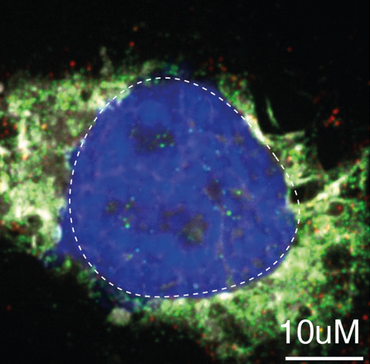EXD2, a new protein involved in the transcriptional response to genotoxic stress
To maintain its integrity during a genotoxic attack, our genome stops transcription while the dangers are eliminated and the DNA is repaired. The mechanisms for resuming transcriptional activity are not well understood. In a paper published in the journal Nature Communications, scientists highlight the essential role of the exonuclease EXD2 in the return of gene expression following an attack. This study sheds light on the complex molecular system regulating essential cellular functions such as gene expression when genome stability is compromised.

Our cells are regularly exposed to endogenous and exogenous genotoxic attacks that induce damage in the DNA molecule. The identification of several protective mechanisms against these genotoxic stresses emphasizes the importance of maintaining genome integrity to ensure low mutation frequencies and avoid the occurrence of diseases such as cancer.
In particular, to protect the integrity of gene expression under genotoxic attack, cells undergo a transcriptional stress response that includes an initial step of global inhibition of transcription followed by a restart when the DNA damage is removed and a return to normal is possible. Despite recent advances in our understanding of the transcriptional stress response, the players and mechanisms responsible for transcription restart after DNA repair remain largely unknown.
In this study, researchers show that the exonuclease EXD2 is essential for the return of transcription after genotoxic attack. Cells lacking EXD2 or expressing a version of the enzyme without exonuclease activity are unable to restore transcription after a genotoxic attack, such as UV irradiation, resulting in cell death. Mechanistically, UV irradiation causes EXD2 to relocate from the mitochondria to the cell nucleus and translocate to chromatin. There, EXD2 will transiently interact with RNA Polymerase II in order to degrade the messenger RNA synthesized at the time of the genotoxic attack, which will allow the RNA Polymerase to elongate and synthesize a new messenger RNA under good conditions.
These results reveal a crucial role of EXD2 in the response to transcriptional stress and are the first to show that the return of messenger RNA expression requires first the degradation of RNA synthesized at the time of the genotoxic attack.
